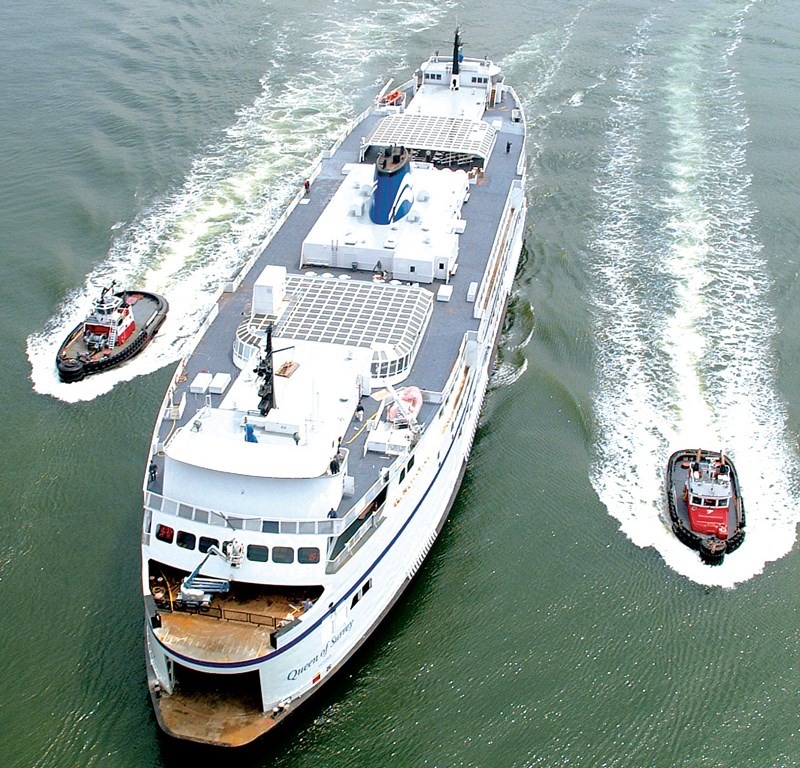A ground-breaking report calling for action on BC Ferries will be the highlight of the Union of B.C. Municipalities (UBCM) convention in Whistler from Sept. 22 to 26, Sunshine Coast Regional District chair Garry Nohr predicted Tuesday.
“Once it becomes UBCM policy then the whole province has spoken. It’s not just ferry-dependent communities,” Nohr said.
The report, released by UBCM and the Association of Vancouver Island and Coastal Communities (AVICC) last week, estimates B.C.’s economy lost $2.3 billion in economic activity due to ferry fare increases between 2003 and 2013.
While ridership declined 11 per cent during that period, the report estimates passenger volumes would have instead grown by 19 per cent if fare increases had been limited to the rate of inflation.
Delegates at UBCM will vote on four recommendations requesting provincial action that came out of the report:
• Restore ferry service and fares to 2013 levels.
• Take a pause or “time out” to consider the results of the report and commit to further socioeconomic impact analysis that will build on the report’s findings.
• Take action to recognize the coastal ferry system as an extension of the highway system and administer and fund it accordingly.
• Work cooperatively with coastal communities on a long-term strategy for the ferry system that will ensure the sustainability of those communities and the ferry service.
Nohr, one of the members of the UBCM/AVICC special committee on BC Ferries that assisted with the study, said it fills a long-standing data gap and provides a “real good look” at the socioeconomic impact that rising fares have had on coastal communities.
“We’ve done the study because the government wouldn’t do it,” he said.
Admitting there was “not a hope, I don’t think” that fares will be rolled back, Nohr said the report should force the province to re-examine its direction for BC Ferries.
“I expect they will slow down on the rise in fares and look at the cuts to some of the routes.”
The special committee on BC Ferries is scheduled to meet with Premier Christy Clark during the UBCM convention. Nohr has also been invited to attend a meeting between Upper Sunshine Coast elected officials and a provincial deputy minister to discuss the economic impact of rising fares and reduced service.
The Route 3 Langdale crossing saw the smallest decrease in passenger volumes during the study period, and Nohr said he had to make a case for including the Lower Sunshine Coast in the analysis.
“I kept trying to bring them back to the fact that we have over 700 commuters on the Sunshine Coast, and what will happen as they keep raising fares? It hasn’t really hit us yet, but if they keep raising fares, we’ll really notice it,” he said.
The study found passenger fares for Route 3 rose 82 per cent from 2003 to 2014, increasing from $8 to $14.55, while vehicle fares went up 87 per cent, from $26.25 to $49.05 for a standard vehicle.
Passenger volumes declined by just over five per cent between the peak year of 2004/05 and 2012/13.
“Property values on the Sunshine Coast followed similar trends as other coastal regions, increasing in the earlier portion of the study period then flat-lining and even declining in more recent years,” the report said, noting the Coast’s population has also declined slightly since 2012.
Northern routes were the hardest hit in the province, with drops in passenger volumes ranging from 23 to 38 per cent, while minor routes saw declines in the range of 10 to 20 per cent.
Route 3 is the third-largest route by ridership, carrying more than 2.5 million passengers per year.
The full report can be viewed at ubcm.ca.



